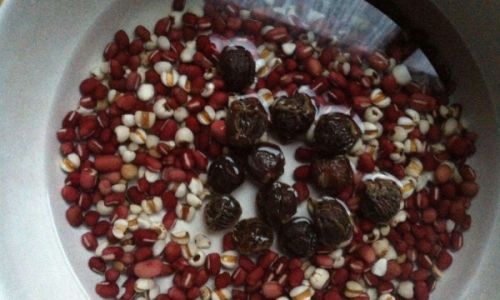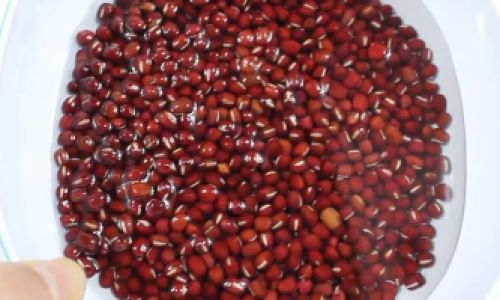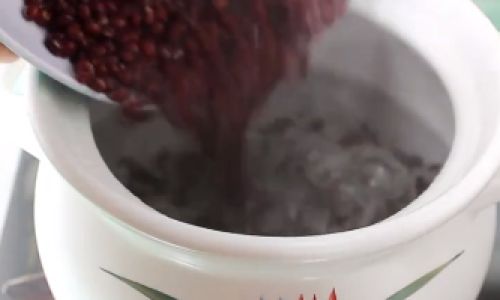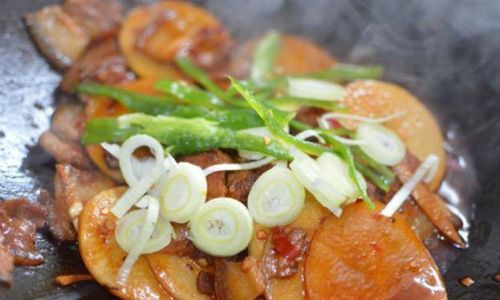Table of content
- Overnight Soaking (The Classic Method)
- Quick-Soak Method (For Impatient Cooks)
- Hot Soak Method (For Extra Tenderness)
- Use the Right Pot and Liquid Ratio
- Simmer, Don’t Boil
- Skim Off Foam (But Don’t Obsess)
- Add Aromatics and Seasonings Strategically
- The Baking Soda Hack
- Check for Doneness Early and Often
- Old Beans
- Hard Water
- High Altitude
- Acidic Ingredients Added Too Early
- Pressure Cooker Magic
- Slow Cooker Convenience
- Freeze-Thaw Method
Large red beans, also known as kidney beans, are a staple in many cuisines around the world. Their earthy flavor, creamy texture, and nutritional benefits make them a beloved ingredient in soups, stews, salads, and even desserts. However, one common challenge home cooks face is achieving that coveted “melt-in-your-mouth” tenderness without turning the beans into mush or, worse, ending up with undercooked, crunchy beans. This article delves into the science and art of cooking large red beans to perfection, exploring pre-soaking methods, cooking techniques, and troubleshooting tips to ensure your beans are always tender, flavorful, and ready to elevate any dish.

Understanding the Anatomy of Large Red Beans
Before diving into cooking methods, it’s essential to grasp why large red beans can be tricky to cook. These beans, like all legumes, contain complex carbohydrates, proteins, and a protective outer layer called the seed coat. The seed coat is designed to resist moisture and heat, ensuring the bean survives harsh conditions until it’s time to germinate. While this natural defense mechanism is brilliant for the plant, it can be frustrating for cooks aiming for tenderness.
The key to breaking down this resilience lies in two processes: hydration and heat. Hydration softens the seed coat, allowing moisture to penetrate the bean, while heat denatures the proteins and starches, making them edible. However, achieving the right balance requires patience, precision, and a few clever hacks.
Pre-Soaking: The Foundation of Tender Beans
Pre-soaking large red beans is non-negotiable if you want to avoid a lengthy cooking process or uneven texture. Soaking accomplishes three critical goals:
- Reduces cooking time by hydrating the beans in advance.
- Removes indigestible sugars (oligosaccharides) that cause gas.
- Softens the seed coat, ensuring even cooking.
There are three primary soaking methods, each with its pros and cons:
Overnight Soaking (The Classic Method)
This is the most traditional approach.
-
Steps:
- Rinse 1 pound of large red beans under cold water to remove debris.
- Place them in a large bowl and cover with 6–8 cups of water (beans should be submerged by 2–3 inches).
- Let soak at room temperature for 8–12 hours (or overnight).
- Drain, rinse again, and cook.
-
Pros: Simple, effective, and requires no active effort.
-
Cons: Requires planning ahead; beans may ferment slightly in warm climates.
Quick-Soak Method (For Impatient Cooks)
Perfect when you forgot to soak beans the night before.

-
Steps:
- Rinse beans and place them in a large pot.
- Cover with 6–8 cups of water and bring to a rolling boil.
- Boil for 2 minutes, then remove from heat.
- Cover the pot and let sit for 1 hour.
- Drain, rinse, and cook.
-
Pros: Cuts soaking time to 1 hour.
-
Cons: May not reduce cooking time as much as overnight soaking.
Hot Soak Method (For Extra Tenderness)
Ideal for older beans or those stored in dry conditions.
-
Steps:
- Rinse beans and place in a pot.
- Cover with 6–8 cups of boiling water.
- Let sit for 1–2 hours off the heat.
- Drain, rinse, and cook.
-
Pros: Softens tough beans effectively.
-
Cons: Requires boiling water in advance.
Cooking Techniques for Perfectly Tender Beans
Once pre-soaked, the real magic happens during cooking. Here’s how to ensure your beans turn out creamy, not crunchy:
Use the Right Pot and Liquid Ratio
- Pot: Opt for a heavy-bottomed pot (Dutch oven or stockpot) to distribute heat evenly. Avoid thin pots, which can scorch beans.
- Liquid: Use 6–8 cups of fresh water or broth per pound of soaked beans. For unsoaked beans, increase to 8–10 cups.
Simmer, Don’t Boil
Bring the beans to a gentle simmer over medium heat, then reduce to low. Boiling aggressively can cause the beans to burst or become mushy on the outside while remaining hard inside.

Skim Off Foam (But Don’t Obsess)
As beans cook, a grayish foam may form. This is harmless protein residue. Skim it off with a spoon for a clearer broth, but don’t worry if you miss some—it won’t affect tenderness.
Add Aromatics and Seasonings Strategically
- Salt: Add 1–2 teaspoons of salt after the beans have softened (usually 1–1.5 hours into cooking). Adding salt too early can toughen the seed coat.
- Acidic Ingredients: Wait until beans are fully tender before adding tomatoes, vinegar, or citrus. Acid prevents the beans from softening.
- Herbs and Spices: Onion, garlic, bay leaves, and cumin can be added at the start for depth.
The Baking Soda Hack
For stubbornly hard beans, add 1/4 teaspoon of baking soda per pound of beans during cooking. Baking soda raises the pH of the water, helping to break down the seed coat. Use sparingly—too much can make beans mushy and alter flavor.
Check for Doneness Early and Often
Start testing tenderness after 1 hour of simmering (for soaked beans). A bean is done when it’s creamy throughout but still holds its shape. Overcooked beans collapse; undercooked ones resist when bitten.
Troubleshooting: Why Won’t My Beans Soften?
Even with proper soaking, sometimes beans refuse to cooperate. Here’s why:
Old Beans
Beans lose moisture over time, making them harder to cook. Buy from stores with high turnover, and store beans in airtight containers in a cool, dark place.
Hard Water
Minerals in hard water can prevent beans from softening. Add a pinch of baking soda to neutralize minerals.
High Altitude
At higher elevations, water boils at lower temperatures, slowing cooking. Increase cooking time and use a pressure cooker if possible.
Acidic Ingredients Added Too Early
As mentioned, acid halts softening. Save acids for the final stages.
Advanced Techniques for Faster Cooking
Life happens, and sometimes you need beans now. These methods can slash cooking time:

Pressure Cooker Magic
A pressure cooker can turn soaked beans tender in 15–20 minutes and unsoaked beans in 25–30 minutes.
- Steps:
- Soak beans (optional but recommended).
- Add beans, liquid, and seasonings to the pressure cooker.
- Cook at high pressure for the time above.
- Let pressure release naturally for 10 minutes before quick-releasing.
Slow Cooker Convenience
Ideal for hands-off cooking.
- Steps:
- Soak beans overnight.
- Add to a slow cooker with 6 cups of liquid and seasonings.
- Cook on low for 6–8 hours or high for 3–4 hours.
Freeze-Thaw Method
Freezing soaked beans disrupts their cell structure, making them cook faster.
- Steps:
- Soak beans overnight.
- Drain, spread on a baking sheet, and freeze for 2 hours.
- Cook as usual (reduces time by 20–30%).
Nutritional Benefits and Creative Uses
Beyond their culinary versatility, large red beans are nutritional powerhouses. They’re rich in:
- Fiber: Aids digestion and promotes satiety.
- Protein: A plant-based protein source (1 cup = 15g).
- Antioxidants: Combats inflammation.
- Iron and Folate: Essential for energy and cell repair.
Meal Ideas:
- Smoky Red Bean Soup: Blend cooked beans with roasted tomatoes, smoked paprika, and vegetable broth.
- Bean and Quinoa Burgers: Mash beans with cooked quinoa, spices, and breadcrumbs; pan-fry until crispy.
- Coconut Red Bean Curry: Simmer beans in coconut milk with curry paste, ginger, and spinach.
- Sweet Bean Paste: For desserts, cook beans with sugar, vanilla, and cinnamon until thick.
Conclusion: Mastering the Art of Tender Beans
Cooking large red beans to perfection is a blend of science and intuition. By understanding the role of pre-soaking, simmering techniques, and troubleshooting, you can transform even the most stubborn beans into a tender, flavorful ingredient. Experiment with seasonings, embrace slow cooking for depth, or rely on a pressure cooker for speed—the choice is yours. Remember, patience is key. The next time you simmer a pot of red beans, savor the process. After all, great food is worth waiting for.






0 comments